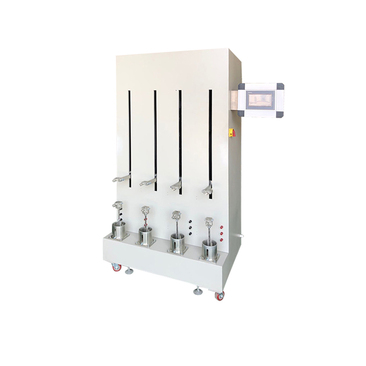calibrate insulation resistance tester
Understanding the Calibration of Insulation Resistance Testers
Insulation resistance testers are essential instruments used in various electrical applications to ensure the safety and reliability of electrical systems. These devices measure the resistance of electrical insulating materials, helping to identify potential faults or degradation in insulation over time. To maintain accuracy and reliability in their readings, regular calibration of insulation resistance testers is crucial.
Importance of Calibration
Calibration refers to the process of configuring an instrument to provide a result for a sample within an acceptable range. For insulation resistance testers, this means adjusting the device so that its measurements align with known standards. Proper calibration helps in achieving several goals
1. Accuracy Regular calibration ensures that the tester provides accurate resistance readings. As insulation materials age or are subjected to different environmental conditions, their properties may change, leading to outdated or incorrect readings if the tester is not calibrated.
2. Safety Incorrect insulation resistance measurements could lead to unsafe electrical conditions, potentially resulting in electrical fires, equipment damage, or severe injuries. Calibration helps ensure that the tester functions correctly and provides foolproof safety checks.
3. Compliance Many industries are subject to strict regulations regarding electrical testing. Regular calibration of insulation resistance testers keeps organizations compliant with these regulations, thereby avoiding potential legal issues and fines.
Calibration Process
The calibration of an insulation resistance tester generally involves a few key steps
calibrate insulation resistance tester

1. Preparation Before beginning the calibration process, it is essential to gather all necessary equipment, including calibration standards, reference resistors, and a multimeter to verify accuracy.
2. Setting Up The insulation resistance tester is connected to a known reference resistor. The resistance value of this reference should be within the testing range of the insulation tester.
3. Testing The technician operates the insulation resistance tester and records the measured resistance value. This value is then compared to the known value of the reference resistor.
4. Adjustment If there is a discrepancy between the measured value and the known reference value, adjustments are made to the tester to align its readings with the true resistance.
5. Documentation Finally, all results and adjustments should be documented. This documentation is critical for maintaining an accurate historical record of the tester's performance and calibration status.
Regular Calibration Schedule
Establishing a regular calibration schedule is vital for maintaining the integrity of insulation resistance testing. Experts recommend calibrating the tester at least once a year, or more frequently if used in high-demand environments. Regular calibration ensures that the instrument remains reliable and effective in identifying insulation failures before they can result in significant hazards.
Conclusion
In conclusion, the calibration of insulation resistance testers is not just an administrative task; it is a critical safety measure. Accurate and well-calibrated instruments protect both equipment and personnel from electrical hazards. By understanding the importance of calibration and adhering to a thorough, regular calibration process, organizations can enhance the safety and performance of their electrical systems significantly. Investing time and resources into proper testing and calibration can yield long-term benefits, ensuring that all electrical systems function safely and efficiently.
-
Why the Conductor Resistance Constant Temperature Measurement Machine Redefines Precision
NewsJun.20,2025
-
Reliable Testing Starts Here: Why the High Insulation Resistance Measuring Instrument Is a Must-Have
NewsJun.20,2025
-
Flexible Cable Flexing Test Equipment: The Precision Standard for Cable Durability and Performance Testing
NewsJun.20,2025
-
Digital Measurement Projector: Precision Visualization for Modern Manufacturing
NewsJun.20,2025
-
Computer Control Electronic Tensile Tester: Precision and Power for the Modern Metal Industry
NewsJun.20,2025
-
Cable Spark Tester: Your Ultimate Insulation Assurance for Wire and Cable Testing
NewsJun.20,2025
 Copyright © 2025 Hebei Fangyuan Instrument & Equipment Co.,Ltd. All Rights Reserved. Sitemap | Privacy Policy
Copyright © 2025 Hebei Fangyuan Instrument & Equipment Co.,Ltd. All Rights Reserved. Sitemap | Privacy Policy
